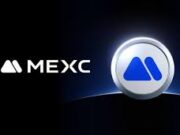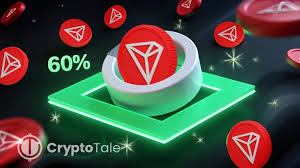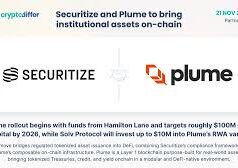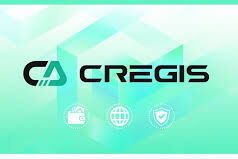The Tron blockchain has just made a game-changing decision that’s got the crypto community buzzing. On August 29, 2025, the Tron Super Representative community voted to approve a proposal, led by Chain Cloud, to cut the energy unit price from 210 sun to 100 sun—a whopping 60% reduction in transaction costs. This move, officially titled Tron Improvement Proposal #789, is set to make waves in the blockchain world, promising to lower barriers for users and developers while sparking debates about its long-term impact on Tron’s ecosystem. Let’s dive into what this means, why it’s a big deal, and what could come next for Tron and its native token, TRX.
The Heart of the Change: What’s Proposal #789 All About?
At its core, Proposal #789 aims to make Tron’s blockchain more affordable by slashing the cost of energy units, a critical resource for executing transactions and smart contracts on the network. In Tron’s ecosystem, energy is used to power operations like TRC20 token transfers and decentralized app (dApp) interactions. One TRX token equals 1,000,000 sun, the smallest unit of TRX, much like satoshis are to Bitcoin. By reducing the energy unit price from 210 sun to 100 sun, the cost of these operations is effectively halved, making it cheaper for users—especially those handling high-volume activities like stablecoin transfers—to engage with the network.coingabbar
The proposal, submitted on August 8, 2025, by GitHub user GrothenDI and championed by Chain Cloud, gained rapid traction. By August 27, it had secured 17 of the 18 required votes from Tron’s 27 Super Representatives, the elected block producers who govern the network. Heavyweights like CryptoChain, Nansen, HTX.com, P2P.org, and Tron Alliance backed the initiative, and it officially passed on August 29, taking effect the same day at 20:00 GMT+8. This swift approval reflects Tron’s agile governance model, rooted in its Delegated Proof-of-Stake (DPoS) system, which allows for quick adjustments to keep the network competitive.<:>
Driving Adoption: The Case for Cheaper Transactions
Why go to such lengths to cut fees? The answer lies in Tron’s ambition to solidify its position as a leading blockchain for low-cost, high-speed transactions, particularly in the stablecoin and DeFi sectors. Tron already handles over $80 billion in USDT, surpassing Ethereum’s $73.8 billion, and accounts for 51% of global USDT volume. This dominance is no accident—it’s the result of deliberate moves to prioritize affordability and scalability.<:>
The fee reduction is expected to make Tron accessible to nearly 45% more users, especially those involved in high-volume activities like stablecoin transfers. Historical data backs this up: a similar fee cut in 2024 (Proposal #95) led to a 116.7% year-over-year increase in fee revenue, driven by a surge in stablecoin activity and smart contract deployments. By making transactions cheaper, Tron is betting on a flywheel effect: lower costs attract more users, which boosts transaction volume, which in turn fuels ecosystem growth.<:>
For developers, this is a boon. Cheaper energy costs mean lower barriers to building and deploying dApps, which could spur innovation on Tron’s platform. From cross-border payments to DeFi liquidity pools, the reduced costs make Tron an even more attractive infrastructure for developers and businesses. Justin Sun, Tron’s founder, called the move “bold and rare,” emphasizing that it prioritizes user benefits and long-term growth over short-term revenue.<:>
The Flip Side: Inflation Risks and Token Economics
But it’s not all smooth sailing. The fee cut comes with a significant trade-off: it could disrupt Tron’s token economics. At the current rate of 210 sun per energy unit, Tron burns approximately 76 million TRX annually, helping to keep the token’s supply in check. By slashing the energy price to 100 sun, the burn rate will decrease, potentially tipping the network toward net inflation unless transaction volume rises enough to offset the loss.<:>
This concern isn’t theoretical. TRX’s price, which doubled since 2024 to around $0.34 as of August 29, 2025, has already shown signs of volatility. Post-announcement, TRX dipped 4% intraday, with trading volume spiking 29.5% to $1.2 billion. Short positions outweighed longs by 302%, signaling bearish sentiment among traders worried about reduced incentives for holding TRX. If stakers opt out to chase better returns elsewhere, a supply surge could put further pressure on TRX’s price.coinspeaker
Analysts are divided. Some project TRX could climb to $0.20–$0.26 by the end of 2025 if institutional partnerships (like those with MetaMask and AEON Pay) and the Kant mainnet upgrade drive demand. Others warn of a liquidity trap: lower fees plus stagnant usage could erode token value. The key variable is whether the fee cut sparks enough activity to maintain or exceed the current burn rate.<:>
Learning from the Past: Tron’s Track Record with Fee Adjustments
Tron’s not new to tweaking its fee structure. In 2020 and 2021, it raised energy and bandwidth prices (from 10 sun to 40 sun, then to 140 sun, and later to 420 sun) to boost staking and reduce low-value transactions. Those hikes increased the network’s staking rate from 22% to 32% without denting transaction volume, which grew from 2 million to 5 million daily transactions.<:>
More recently, the 2024 fee reduction under Proposal #95 proved that cutting costs can drive growth. After that change, Tron’s USDT addresses surged from 5 million to 35 million by August 2025, and fee revenue soared. The network’s “Gas-Free” feature, introduced in February 2025, also slashed weekly USDT transfer fees by 71%, further cementing Tron’s appeal for stablecoin users. These precedents suggest that Proposal #789 could follow a similar trajectory, but only if adoption keeps pace.<:>
Tron’s Place in the Blockchain Race
Tron’s fee cut isn’t just about its own ecosystem—it’s a strategic play in the broader blockchain wars. With a market cap of $33.1 billion, Tron ranks as the ninth-largest blockchain, and its $9.3 billion in total value locked (TVL) places it fifth. Its transaction costs ($0.0003 per transaction) already undercut Ethereum ($1.17) and rival Solana ($0.00025), but Solana’s 38,000 transactions per second (TPS) highlight scalability challenges Tron must address to stay ahead.<:>
The stablecoin market is a key battleground. Tron’s $80.8 billion in USDT and 40% growth in stablecoin supply since early 2025 give it an edge over Ethereum. The fee cut could widen this gap, especially in regions like Latin America and Asia-Pacific, where low-cost transactions are critical for adoption. However, competitors like Solana and Ethereum’s Layer 2 solutions are also vying for dominance, and Tron’s gamble hinges on sustaining its cost advantage without sacrificing financial stability.<:>
What’s on the Horizon for Tron?
The immediate future looks promising but uncertain. The fee cut, effective August 29, 2025, is expected to drive a surge in user activity, particularly for stablecoin transfers and dApp development. Quarterly fee reviews, as outlined by Justin Sun, will help Tron adjust to TRX price fluctuations and market conditions, ensuring the network remains competitive.<:>
For investors, the fee cut is a high-risk, high-reward proposition. If transaction volume spikes, TRX could see bullish momentum, potentially hitting the projected $0.20–$0.26 range. But if adoption lags, inflationary pressures could weigh on the token’s value. Technical indicators, like the death cross formed on August 27 and an RSI of 58.95%, suggest TRX may consolidate between $0.33 and $0.36 in the near term.<:>
Closing Thoughts: A High-Stakes Bet on Growth
Tron’s 50% energy price cut is a daring move to cement its place as a blockchain powerhouse. By prioritizing affordability, Tron is betting on a surge in adoption to drive long-term value. Whether this pays off depends on user and developer response—and whether Tron can navigate the economic risks. One thing’s certain: in the fast-moving world of crypto, Tron’s not standing still.
Additional Sources:




























A 50% energy cut is no small move
This is smart timing. High gas fees elsewhere are still a barrier
Tron making itself cheaper could push more stablecoin activity and retail adoption onto its chain
Tron’s already processing a crazy number of USDT transfers daily
Accessibility isn’t just about UX, it’s about cost
Cutting fees in half makes blockchain less intimidating for first-time builders and users
If more developers and small projects can deploy on Tron with lower costs, that could really open up accessibility for global users